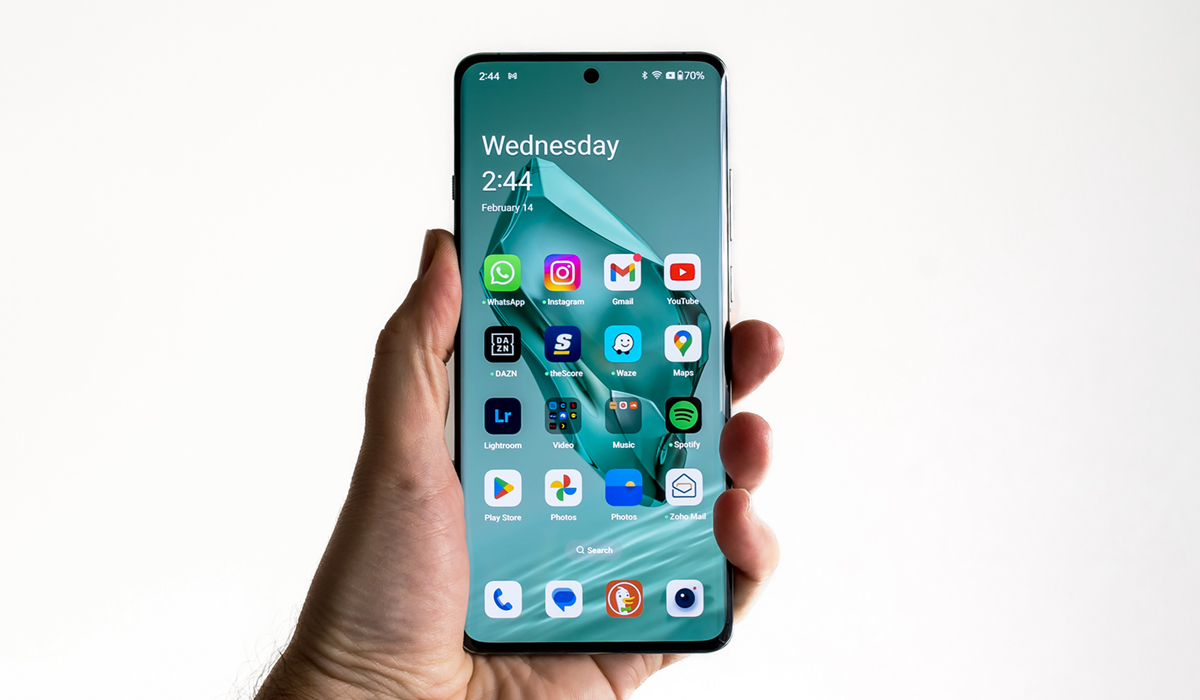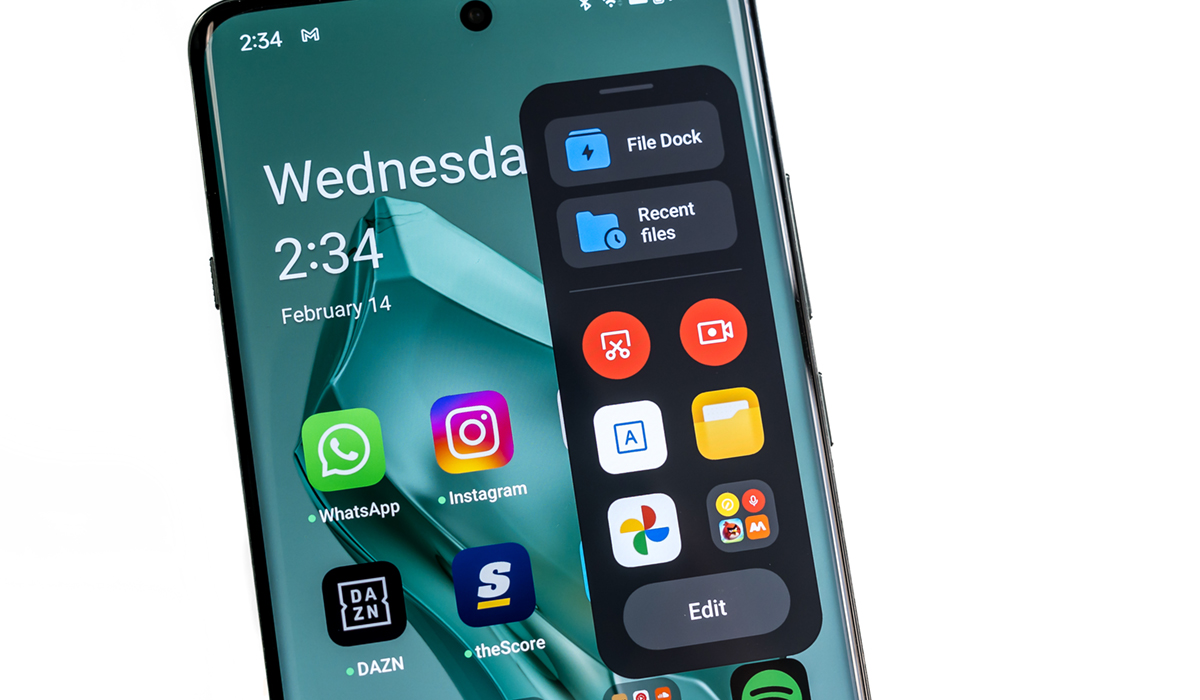
It’s easy to like how the OnePlus 12 looks compared to other smartphones courtesy of its gorgeous design, but there’s more to it than that. The company considers this phone a “flagship killer”, which is to say that it offers features and performance on par with the best in the business, yet costs less than all of them.
There’s merit to such a declaration, mainly because OnePlus continues to find ways to make its phones compelling. The camera is a big reason why, but the rest of the feature set here leaves a good impression, especially as the initial software kinks are ironed out.
OnePlus 12 (as tested):
|
OnePlus 12 design
I’ve tested OnePlus phones for years and am never surprised they come out looking good. The OnePlus 12 is elegant in ways other brands aren’t, from a back inspired by the Dart River in New Zealand (for my flow emerald review unit) to a camera module that blends in nicely with the phone’s body. It still protrudes as a bump out of the back, but its sheer presence is striking. It certainly was to people I showed it to, who unanimously expressed some intrigue over what the phone was and what it could do.
The 6.8-inch AMOLED display is bright—really bright—at 4500 nits peak brightness. Mind you, it only gets that bright in very specific circumstances, and only in certain parts of the screen. When we’re talking brightness uniform across the whole display, the real number is 1600 nits, but it can seemingly crack 2000 in sunlight. That’s really bright in most conditions and makes the OnePlus 12 easier to look at when battling glare onscreen. The restraint is a good thing because 3000 nits is dangerous to eyes over longer periods, so the phone can’t get that bright across the entire display at one time.
I’m personally not a fan of screens with curved edges (never was) but this phone has them, which is probably why it feels sleeker and smaller than other phones of comparable dimensions. Gorilla Glass Victus 2 screen protection helps add some durability, but I’d still advise getting a case for extra peace of mind. The one downside is the IP65 rating for dust and water resistance, which is lower than other major Android handsets currently have, particularly for water, where IP68 is fairly common.
You won’t have to worry as much about performance, thanks in large part to the Snapdragon 8 Gen 3 processor and plentiful memory and storage. The 12 starts at 12GB of RAM and 256GB of storage, though 16GB and 512GB variants are also available.
Another cool perk is the built-in infrared (IR) blaster cutout at the top that you can set up and use as a universal remote. It works with a variety of device types and runs a pretty smooth setup, though there’s no guarantee it will successfully connect with all of them.

Performance and software
If you’ve never used a OnePlus phone before, you may find the software experience as good as it gets for Android. The company’s own OxygenOS overlay has long been an excellent complement to what Android already offers, and that continues here. You can find some of the unique ones by going to Settings->Special features where you’ll see useful ones like Flexible Window and Smart Sidebar, which enable quicker access to the apps and features of your choice.
Overall, though, the phone just runs smoothly. The initial kinks I experienced when I first got the device seem to have been fixed, leaving a better impression. The screen’s 120Hz refresh rate is adaptive, so it will drop for static situations to preserve battery life, ramping up again when the app or task calls for it. Even if you’re entirely new to what OxygenOS looks like, you won’t have much of a problem finding your way around the interface.

You also won’t be finding any AI features because OnePlus hasn’t included them as of this review. Unlike Samsung and Google who have embraced artificial intelligence for features related to communication and photo editing, the OnePlus 12 doesn’t come with things like that. Certain AI features will come down the line, like Google’s Magic Compose to help compose messages based on the tone or need, be it professional or for social media, for example. Emojify will be another that will create emojis based on photos of people or pets from your own photos.
Despite that, missing AI features don’t negatively impact the broader user experience here. OnePlus will deliver four years of Android updates and five years of security updates for the OnePlus 12. That’s now shorter than the seven years Google offers for the Pixel 8 lineup and Samsung does for the Galaxy S24 line, which may be a problem if you plan to hold on to your next phone for as long as possible.
Camera

Being so familiar with OnePlus devices, I’ve seen them evolve on the camera side and the momentum is clearly moving in a positive direction. One of the biggest reasons why is OnePlus’ collaboration with Hasselblad, the storied Swedish camera brand that contributes to the colour reproduction and output in the OnePlus 12. This partnership goes back a few years now, and feels more refined each year, which helps explain why this phone is capable of taking excellent photos.
Led by the 50-megapixel main wide lens, the OnePlus 12 shoots a little warmer than the previous OnePlus 11 did, which explains why photos in sunlight have more of a yellow or orange tonality. This can also happen in low-light situations, sometimes adding a nice glow to a photo, but you can always adjust the colour temperature in the editing menu afterward. The 64-megapixel telephoto is excellent for capturing images from a distance, even if you notice the loss of detail as you pinch and zoom in to see everything really up close.










One of my favourites was Snapshot, a mode you’ll find at the top menu regardless of the lens you use. It automatically sets the shutter speed and ISO to freeze action, greatly simplifying how to capture a person or object moving in the frame. It’s probably the easiest way to capture a loved one performing or playing at an event, be it sports or anything else. Long Exposure mode is the opposite in that it slows down the exposure to create cool moving effects, like streaking vehicle lights or soft waterfalls.
Hi-Res mode lets you take photos at the full resolution for all three rear lenses, which is ideal if you have enough light and want to crop in later. Or in the event you might want to print the photo later. Master mode is for those who want more manual control over composition—well worth learning to become a better mobile photographer. Portrait mode is also excellent, and Night does a good job too.

Most of the available modes offer a few Hasselblad filters called Radiance, Serenity and Emerald, all of which adjust colour and white balance to produce images with a little more retro or artistic composition. Again, also worth experimenting if you want to try something different.
Battery life
OnePlus has long been a big proponent of faster charging and that carries on here in a big way. Wisely, it brought back wireless charging to the OnePlus 12, and if you lay it on the company’s own AirVOOC wireless charging stand, you can fully recharge the device wirelessly in just one hour. But the phone does come with a charging adapter in the box to go with the cable as part of the SuperVOOC 80W charging standard. It took just 32 minutes for me to fully recharge the phone to 100% from zero—a feat no other brand can match at this point.
Those charging speeds make battery life feel almost invincible on the OnePlus 12. The phone holds up really well on a daily basis, as is, but just knowing that you can plug in for 10 minutes and get up to 40% back is highly efficient in a pinch.
Final thoughts
OnePlus may be a sleeper brand to some of you reading this, and that’s perfectly fine, but if you’re in the market for something new, the OnePlus 12 is certainly worth a look. The phone offers flagship performance for less money, has excellent battery life, faster charging, takes excellent photos and is easy to learn. It’s an Android phone, after all, so also includes an app called Clone Phone to transfer all data from any other phone, including iPhones.
It’s notably missing the AI features others like Samsung and Google have been doling out, but that may change in time with subsequent updates. OnePlus has a solid track record for timely updates, and I wouldn’t expect that to change with this phone. You may also be considering the OnePlus 12R, a budget alternative to the regular 12. It’s similar, though doesn’t have all the same components and doesn’t include the Hasselblad integrations on the camera side, so keep that in mind.
The OnePlus 12 is available now in silky black.




